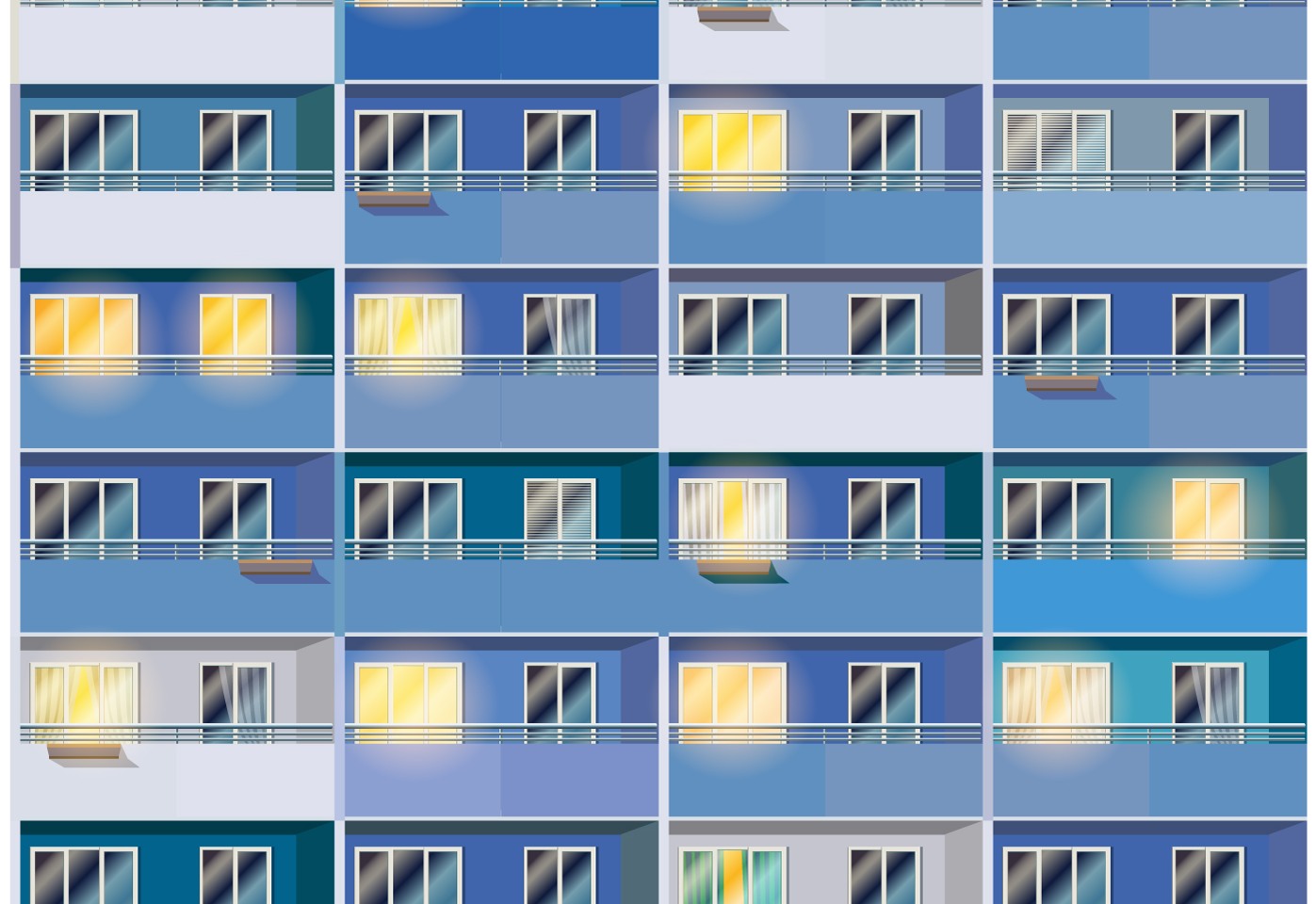Multifamily has always been known as the darling of the commercial real estate market. The asset class has everything an investor could want, like relative recession protection and stable demand. People will always need a place to live, and that fact has solidified a permanent place for multifamily at the top of the commercial real estate food chain.
But, if we take a closer look at the dynamics within multifamily, not all apartment properties perform equally. In 2021, Class-B multifamily specifically became known as the top property investment by several industry experts because it, as builder Cive said, “endures steady cash flow coupled with a good balance of risk and reward.”
Class-A apartments are known as the highest quality properties, attracting high income-earning tenants and generating above-market rents. These are generally the best income producing properties and provide the lowest risk; they are also the most expensive, and during a downturn, the occupancy of class-A properties can fall due to the higher cost of rent. This is where class-B multifamily shines. Although the property type won’t capture top-tier rents, apartments in the B grade are high-functioning and high-performing properties with healthy rents, strong occupancy, and stable performance during a downturn.
Here are the top three reasons class-B multifamily is the true star of CRE.
Rent Stability Ensures Investment Performance
Class-A multifamily is known for generating above market rents, or in some cases, even setting the market for rents. These higher-end properties generally see the most substantial year-over-year rent growth compared to mid-tier apartment units—and that gap is growing. This year, class-A rental units are priced 28% higher than class-B multifamily, with renters paying $2,227 on average for a class-A unit and $1,748 for a class-B apartment. In fact, for a class-A property to be price competitive with a class-B apartment in 2023, RealPage estimates that owners would have to offer deep concessions with at least three months of free rent.
The class-A premium can be difficult to achieve and maintain, particularly in a bear market, when consumers become more price conscious. For this reason, class-B multifamily is insulated from economic ebbs and flows, creating income stability over the long-term. In downcycles, class-B multifamily rent growth outpaces class-A multifamily, as renters look to reduce living costs. Moody’s Analytics data shows that class-B and class-C multifamily rents have outpaced class-A multifamily rents in 73% of past recessions. This happened in the first half of 2022, which had two consecutive quarters of negative GDP growth.
In 2023, Fannie Mae estimates that class-B multifamily rents will increase 2.9%. Although rent growth will likely temper as the economy stabilizes, Moody’s economists Thomas LaSalvia and Lu Chen are optimistic about the long-term performance of this segment of rental housing. “While we likely can’t continue to grow at this clip, the lower quality class-B and class-C buildings will continue to thrive,” they said.
Discounted Rents Attract Strong Demand
Class-B multifamily serves an important middle-market demographic of renters. Officially, HUD defines class-B renters as those generally making between 80% and 120% of the median area income, although residents do not need to have a qualifying income to live in a workforce housing unit. This demographic is also called a renter by necessity, meaning the occupants in a workforce unit are likely to remain renters, while class-A renters, also called renters by choice, have the option to become homeowners.
By serving middle-income earning renters, a demographic group that includes school teachers and electricians, class-B apartments benefit from long-term sustained demand. In 2022, the class-B vacancy rate was a tight 3.1% with 5.5% annualized rent growth, while class-A multifamily vacancy is about 200 basis points higher. Over the last decade, class-B apartments have maintained a 6.1% vacancy rate. Discounted rents have guaranteed this strong demand. Since January 2011, class-B rents have kept pace with wage growth, ensuring attainable pricing for prospective renters.
During times of economic turbulence, the demographic can expand beyond the middle-income market to class-A renters that are trimming costs. Last year, GlobeSt.com reported that renters were “trading down” from class-A apartments into class-B to reap the price savings. This dynamic has ensured that class-B multifamily attracts strong demand through challenging and prosperous economic cycles.
Lower Barrier to Entry Opens Doors for Diverse Capital
Operationally, class-B multifamily provides income stability, strong demand and recession insulation, but for investors, class-B apartments also present tremendous upside with limited risk. On class-B properties that do not need an upgrade, investors typically see a 25 to 50 basis point increase in the going-in cap rate compared to class-A multifamily. For this reason, J.P. Morgan named workforce housing as one of the best investment opportunities in commercial real estate for 2023. Due to “consistent cash flow, vacancy rates at a relative five-year low and a growing crisis of affordable housing,” they predicted the asset class would be a solid performer in 2023.
On a value-add deal, the upside potential is even greater. Cap rates for value-add projects will be near 7% for the year. In one example, value-add investor Trion Properties executed a $2.6 million capital improvement plan at a class-B property and increased the asset’s value from $9.6 million to $19.4 million. However, even on a standard, operational class-B deal, investors will see strong and stabilized performance, making this an attractive play for buyers executing either business plan.
Investors are also reshaping their approach to class-B investment by utilizing automation and predictive analytics to better execute an investment strategy. Predictive analytics give investors deeper insights into a property’s potential performance to forecast probable outcomes and mitigate downside risk. At Northspyre, our clients have used predictive analytics to realize returns on development projects and reduce budget overages, but there are tremendous applications through the lifecycle of a real estate investment. For class-B multifamily investors, adding technology to the tool box can amplify the return potential of this already attractive asset.
Want to learn more about how your real estate firm can maximize returns, even during challenging economic times? Download our guide Maximizing Returns: A Real Estate Developer Recession Guide.



